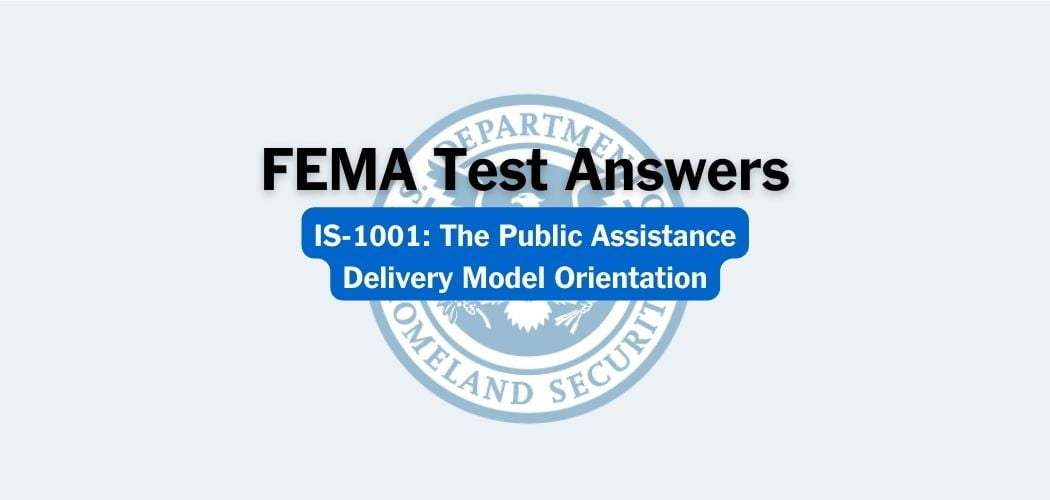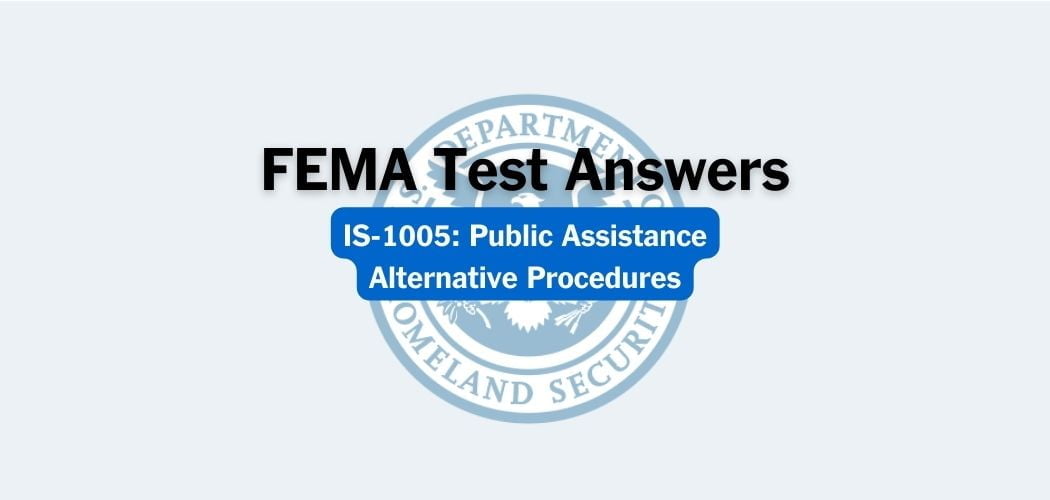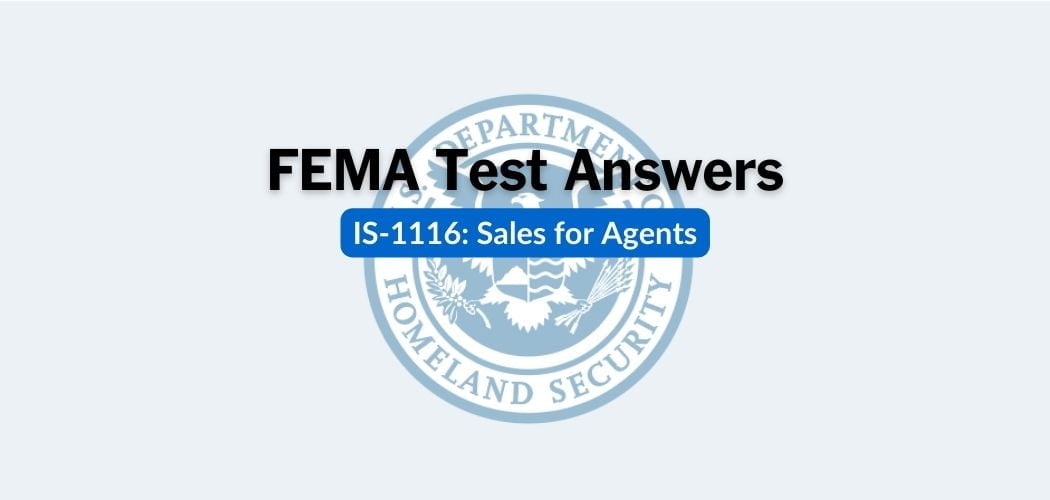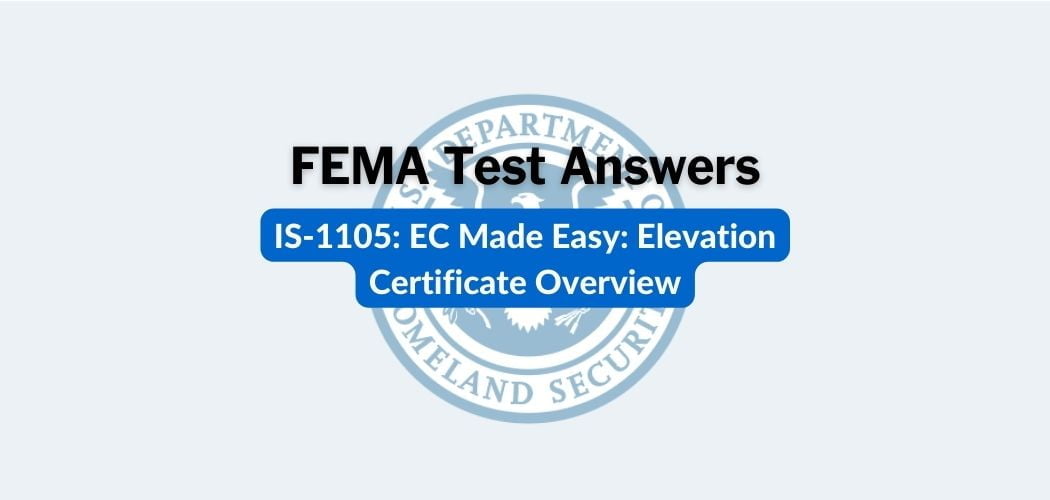Overview: The FEMA IS-319.A course was published on 9/12/2019 to train Hazard Mitigation Specialists to explain both the tornado and high-wind hazards and how to mitigate future damages effectively, to people affected by these hazard events.
FEMA IS-319.A test answers
Each time this test is loaded, you will receive a unique set of questions and answers. The test questions are scrambled to protect the integrity of the exam.
Question 1. Which is an example of damage caused by rotating vortex winds?
A. Part or all of the roof torn off
B. Damaged siding
C. Broken windows
D. Structures ripped apart✅
Question 2. What mitigation measure is used to prevent outbuildings from becoming flying debris?
A. Securing doors and windows with top and bottom latches
B. Anchoring with straps similar to those used in manufactured homes✅
C. Replacing gable roofs with hip roofs
D. Bracing with X-pattern 2 X 4s
Question 3. What type of damage is it when a manufactured home shifts off of its foundation due to an anchoring system failure?
A. Structural damage
B. Continuous load damage
C. Indirect damage✅
D. Direct damage
Question 4. What mitigation measure is used to help protect garages from being breached by straight-line winds?
A. Securing plywood sheets on the outside of garage doors
B. Reinforcing garage doors with metal bars and brackets✅
C. Opening garage doors and windows to allow the wind to pass through the area
D. Securing garage doors with latches on top and bottom
Question 5. Which of the websites listed is one that you would prefer to as resources for tornado mitigation information?
A. Wikipedia
B. Occupational Safety and Health Administration (OSHA)
C. National Geographic
D. FEMA’s Hazard Mitigation Disaster Workforce✅
Question 6. What mold publications should Hazard Mitigation staff distribute?
A. ONLY the mold publications that have been provided by FEMA and the EPA.
B. ONLY the mold publications that have been provided by the American Red Cross.
C. ONLY the mold publication provided by the Centers for Disease Control.
D. ONLY the mold publication provided by the Hazard Mitigation Community Education and Outreach Group.✅
Question 7. How do ground anchors derive much of their resistance to wind loads?
A. Ground anchor wind resistance is determined by the type of strap attached to the anchor.
B. Ground anchors are designed to move slightly when loads are applied.
C. Ground anchor wind resistance is determined by the type of soil surrounding the anchors.
D. Ground anchors are designed to transfer wind loads from the roof, to the walls, to the main floor, and then to the ground.✅
Question 8. Which one is a correct statement about mitigation measures for straight-line winds?
A. Roof sheathing should be stapled to trusses.
B. Shingles with longer warranties should not be recommended because of cost.
C. A gable roof is more wind resistant than a hip roof.
D. Shingles should be attached to the roof decking with appropriate length roofing nails.✅
Question 9. Which type of damage has an increased risk of destroying a manufactured home?
A. Structural damage
B. Continuous load damage
C. Indirect damage
D. Direct damage✅
Question 10. What design feature makes a hip roof more resistant to wind damage than a gable-style roof?
A. slopes on all sides✅
B. slope on two sides
C. Z-pattern bracing
D. X-pattern bracing
Question 11. How much distance should be between the building and any tree?
A. The distance should be 4 times the height of the tree when it is planted
B. The distance should be 2 times the height of the tree when it is planted
C. The distance should be at least 3/4ths of the height of the tree when it reaches full growth✅
D. The distance should be greater than the height of the tree when it reaches full growth
Question 12. Which is NOT a reason for advising members of the public to visit the local building official before beginning any repairs or rebuilding? Building officials will:
A. reinforce the point that only licensed professionals are qualified to perform structural repair or structural mitigation work
B. reinforce the point that only FEMA publications and advice should be used when rebuilding a structure that has sustained substantial damage✅
C. have information about any floodplain ordinance that will affect rebuilding when the structure has sustained substantial damage and is situated in a floodplain
D. have information about building codes, permits, inspection requirements, and zoning ordinances may be involved
Question 13. Which is an example of damage caused by straight-line winds?
A. Vehicles lifted off the ground
B. Uprooted trees
C. Structures ripped apart
D. Collapsed structure✅
Question 14. What is the effect when additions like carports, awnings, or porches are attached to manufactured homes without the inclusion of special provisions to support those attachments during the original construction of the home?
A. No significant effect – the special provisions are a way to increase the selling cost of home.
B. No effect as long as the addition is built into the code.
C. Decreases the potential for damages
D. Increases the potential for damages✅
Question 15. Who is responsible for the decision on the type of advice to provide to individuals with damaged homes?
A. State Health Department✅
B. U.S. Public Health Service
C. Centers for Disease Control (CDC)
D. Federal Emergency Management Agency (FEMA)
Question 16. What type of damage is reduced by installing impact-resistant glass, functional shutters, and double door top and bottom latches?
A. Damage from circulatory winds
B. Damage from trade winds
C. Damage from straight-line winds✅
D. Damage from rotating vortex winds
Question 17. Which is an example of damage caused by straight-line winds?
A. Uprooted trees
B. Vehicles lifted off the ground
C. Broken windows✅
D. Structures ripped apart
Question 18. Why should trees be pruned?
A. Pruning decreases the risk of roof damage when trees fall on buildings.✅
B. Pruning makes the tree act like a giant sail, which slows wind speeds.
C. Pruning decreases the risk of tree uprooting.
D. Pruning impacts tree health but has no wind damage mitigation effects.
Question 19. When referring the public to wind-related FEMA publication, what should you point out?
A. The publications are for qualified architects and engineers
B. The publications are for local governments
C. There are different measures for rotating vortex winds and straight-line winds✅
D. The importance of using licensed contractors
Question 20. When advising members of the public about reducing the risk of future hazard damages, whom should you always tell them to visit before beginning any repairs or rebuilding?
A. Their insurance agent
B. The National Association of Home Builders
C. An American Red Cross representative
D. The local building official✅
Question 21. How should the metal brackets and straps used to strengthen a structure be attached?
A. with the adhesives specifically designed for the hardware
B. at the studs and rafters✅
C. stapled to exterior surfaces
D. directly to the plywood sheathing
Question 22. What should you do when speaking with members of the public about reducing the risk of future hazard damages?
A. ALWAYS direct people to local building officials when they are planning repairs or mitigation✅
B. ONLY refer to FEMA publications
C. Give as much detail and advanced level of information so they trust your advice
D. Give specific repair directions
Question 23. Which is a basic fact about mold that can be shared with the public?
A. Mold exposure does not cause or aggravate asthma or respiratory problems in adults and children.
B. You do not have to fix the moisture problem as long as you remove the mold by cleaning it with bleach.
C. It is a myth that musty or earthy odors may indicate mold.✅
D. Mold can cause structural damage to buildings – the longer it grows the more damage it can cause.
Question 24. What is the purpose of anchoring storage sheds and other outbuildings?
A. To prevent outbuildings from becoming flying debris✅
B. To transfer the wind load from the top to the foundation
C. To reduce damage to the roofs of outbuildings
D. To keep winds from breaching the outbuildings
Question 25. Which is the most effective life-safety protection from the rotating vortex winds of a strong tornado?
A. Strapped-down manufactured home
B. Large vehicle
C. School auditorium or gym
D. Safe room or stand-alone shelter✅
Other Hazard Mitigation answers
This module is one in a series of Independent Study modules for the Hazard Mitigation disaster workforce, which addresses appropriate basic mitigation information for public consumption regarding earthquakes, floods, hurricanes, tornados, and wildfires.



